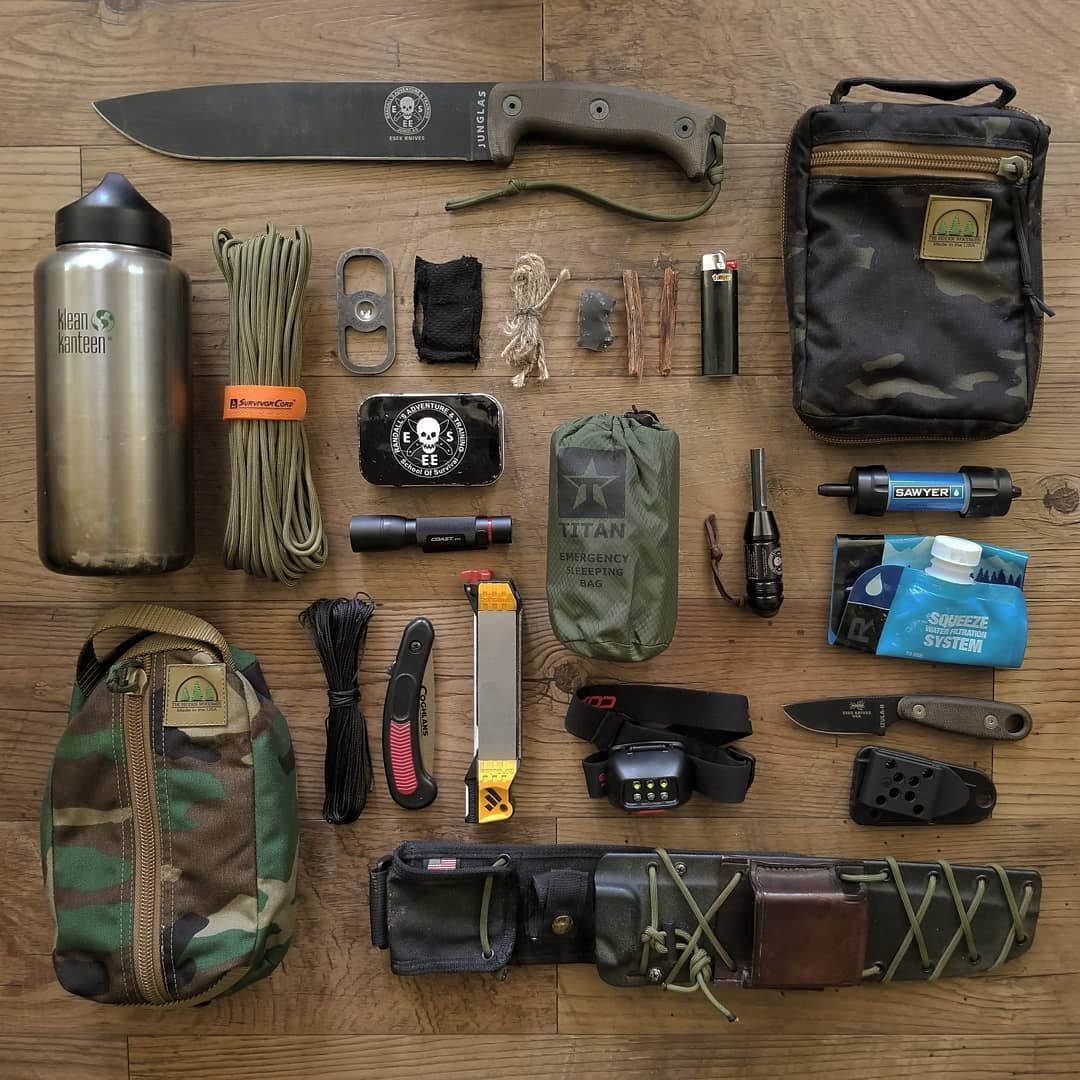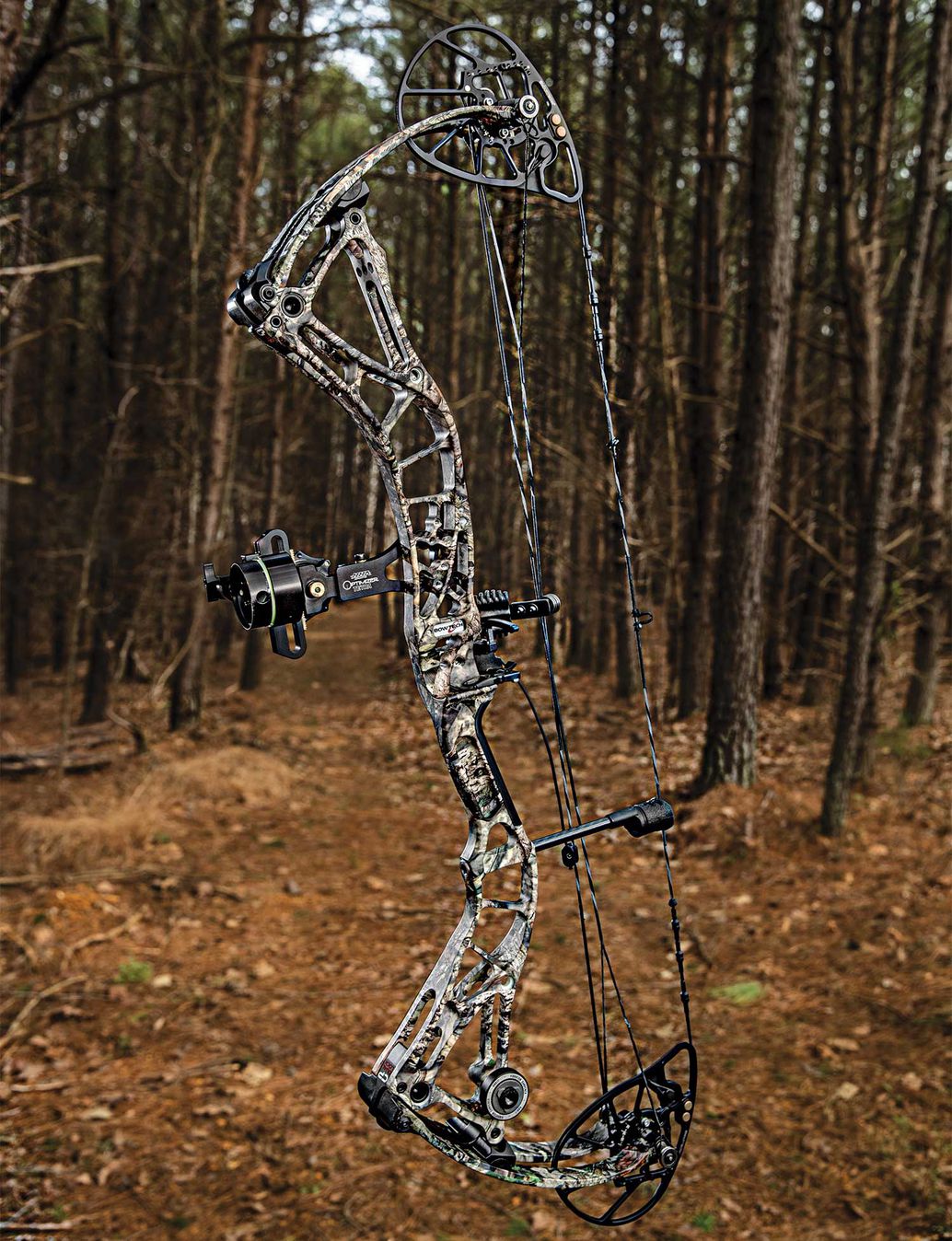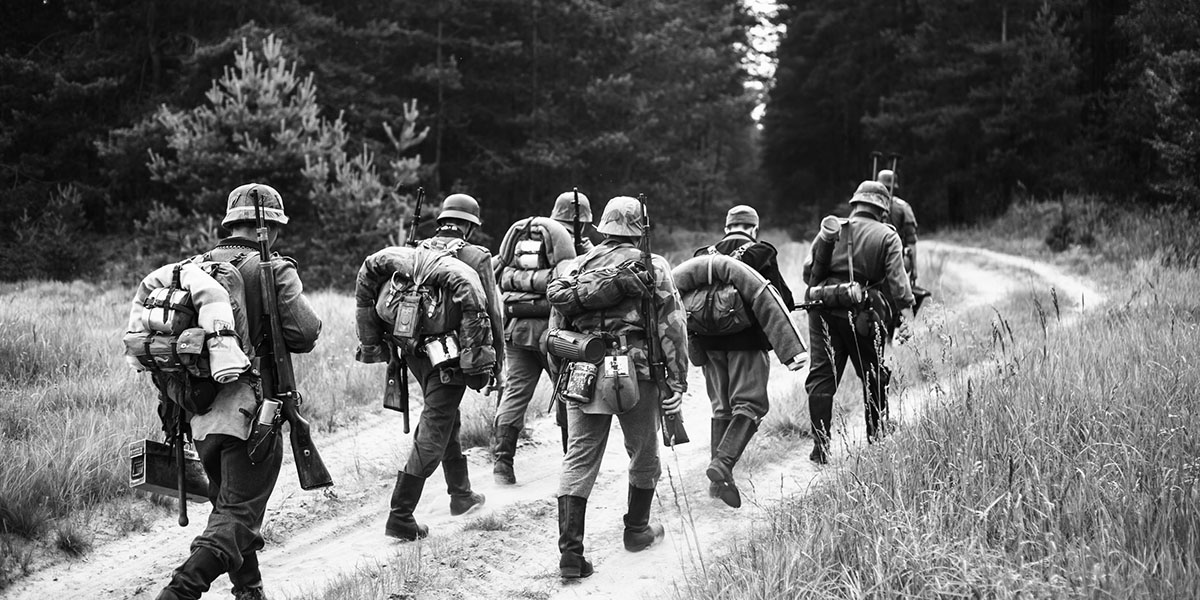D-Day, the Battle of the Bulge, Operation Market Garden — these names still echo with the weight of history. Every major campaign during World War II demanded extraordinary courage from American soldiers who pushed forward through chaos, cold, exhaustion, and the very real threat of death. They weren’t just fighting an enemy; they were enduring the harshest physical environments imaginable while carrying the responsibility to push back against a powerful and determined German war machine.
Although each infantryman had his own specialty and unique daily responsibilities, the average soldier on the ground was equipped with a fairly standard set of items. Their survival often depended on these pieces of gear — some simple, some surprisingly clever — yet all essential in the unforgiving reality of wartime.
The basic issues issued to WWII soldiers were not remotely comparable to the high-tech gear used today. They lacked modern comforts, lightweight materials, and advanced protective systems. Still, American troops managed with what they had, improvising when needed, customizing their loads, and making their equipment work under extreme pressure. What follows is an expanded look at the core items they carried into battle — the things that stayed with them from muddy foxholes to brutal winter marches, shaping their daily experience of the war.
1. The Combat Pack They Relied On
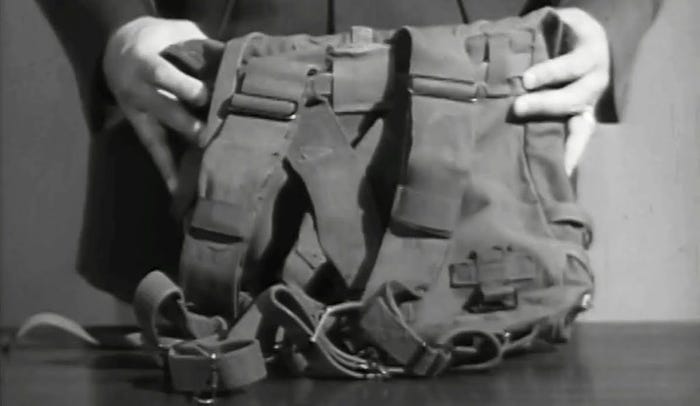
This rugged, waterproof combat pack served as the soldier’s portable life-support system — a tough, compact bag that carried whatever he needed to keep functioning in the field. Inside it, troops stored essentials like shaving kits, soap, socks, and a few carefully chosen rations. Many tucked away personal items such as photographs, letters from home, or small tokens that offered a moment of emotional grounding during long, grinding deployments.
Despite being fairly simple in design, the combat pack had to withstand rain, mud, rolling around in trucks, and constant movement. Some soldiers personalized theirs slightly, arranging the contents to keep heavier items accessible and lighter items tucked deeper. These small decisions made a surprising difference on exhausting marches, especially when long patrols or rapid movements left men grabbing whatever they could without stopping to reorganize.
It wasn’t spacious by modern standards, but it was dependable — a quiet workhorse of a bag that stayed strapped to countless backs from France to Germany, enduring as much punishment as the men who carried it.
2. The Cartridge Belt That Fed Their Rifles
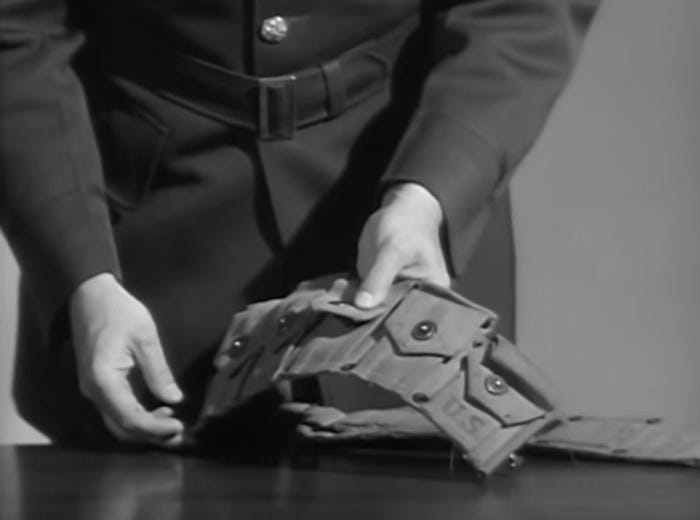
The cartridge belt was one of the most instantly recognizable pieces of gear worn by WWII infantrymen. Wrapped around the waist like a thick fabric bandolier, it featured rows of sturdy pouches that held 8-round clips for the M1 Garand, the standard rifle of the U.S. Army. These pouches were designed to be quickly and easily accessed during combat, because hesitation while reloading could mean the difference between life and death.
Each pouch had a small metal grommet at the bottom, allowing soldiers to attach extra items such as first-aid packets, small tools, or other lightweight survival necessities. These add-ons turned the belt into a compact utility system — something between a modern tactical rig and an early version of a modular combat loadout.
This belt wasn't just storage; it was reassurance. Knowing that ammunition was available, organized, and secure gave soldiers confidence under fire. And because much of WWII infantry combat involved rapid, intense exchanges, having ammo literally strapped to the body kept soldiers moving fast and reacting even faster.
3. The Small but Crucial First-Aid Pouch
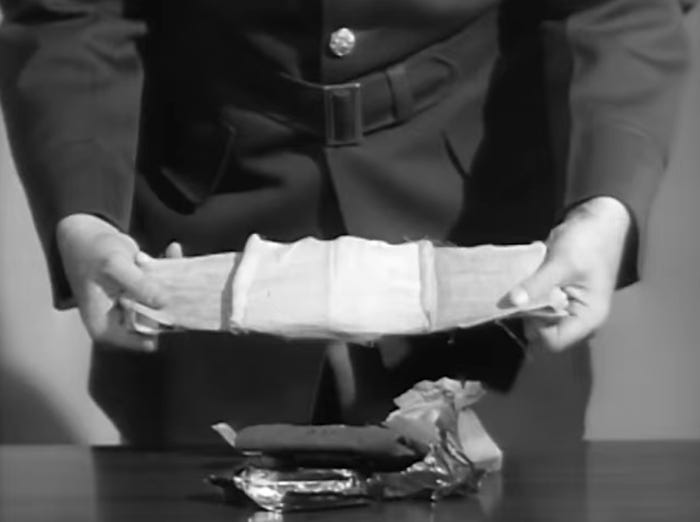
Today’s soldiers carry a wide range of advanced medical gear designed to control bleeding and stabilize injuries in seconds. In WWII, however, troops had nothing so sophisticated. Instead, they carried a humble first-aid pouch — a compact fabric case that typically held just one or two battlefield dressings.
These simple dressings were meant for self-aid or buddy-aid when shrapnel or a bullet caused a bleeding wound. They weren’t magical solutions, and they certainly weren’t enough for major trauma, but for many soldiers they bought just enough time until a medic could reach them. The pouch itself was built to be tough and weather-resistant so that its contents stayed usable during rainstorms, snow, or muddy crawls toward cover.
Even though it seems small and almost primitive today, the first-aid pouch symbolized something important: soldiers were responsible not only for fighting but for keeping themselves alive long enough to keep fighting. It was a reminder that survival on the battlefield often depended on a single piece of cloth and a few moments of quick thinking.
4. The Bayonet — A Blade That Inspired Urgency
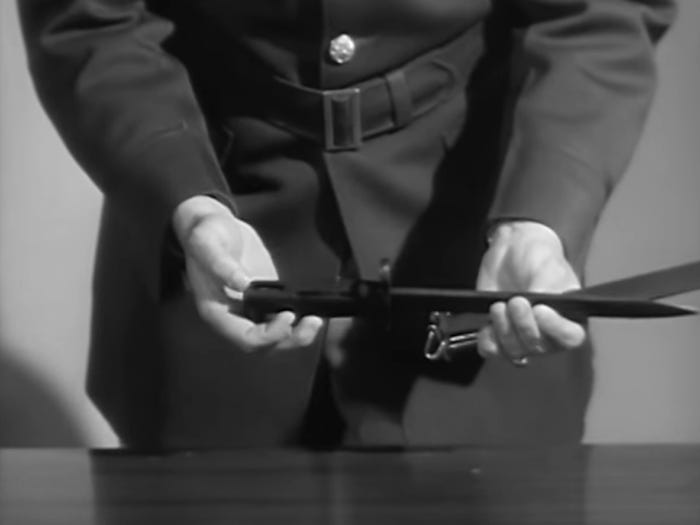
The bayonet, usually sheathed and attached to the cartridge belt, was far more than a knife. It was a psychological tool as much as a physical one — a weapon carried for moments when combat collapsed into close-quarters chaos. Soldiers never knew when an officer might shout “Fix bayonets!” and signal that the battle had reached a brutal, intimate stage.
Because of that unpredictability, bayonets had to be easily accessible and always sharp. Soldiers often maintained the blade carefully, understanding that dull edges or stuck sheaths could cost precious seconds in an emergency. While bayonet charges were less common in WWII than in earlier wars, the weapon still earned its place as part of the soldier’s essential gear. Even outside combat, it saw practical use: cutting rope, clearing brush, prying open crates, or helping with basic tasks around a camp or defensive position.
This combination of combat utility and everyday practicality made the bayonet a steady companion — one more piece of steel carried across Europe’s ruined towns, forests, and farmlands.
5. The Canteen Cover and Its Field Essentials
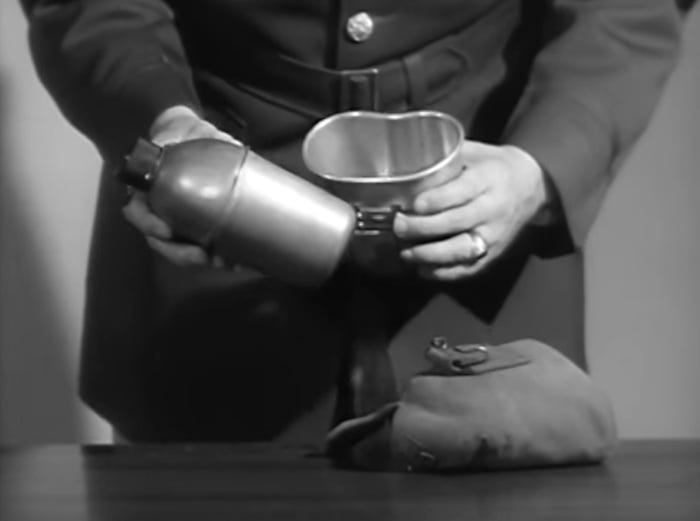
The canteen cover was more than just a pouch — it was a compact dining and hydration system that every soldier depended on from sunrise marches to freezing nighttime watches. Inside the sturdy fabric case sat an aluminum canteen, a matching canteen cup, and the soldier’s simple mess kit. These pieces were designed to survive rough handling, constant exposure to the elements, and the inevitable dents that came with life on the front lines.
Meals during forward operations were rarely luxurious. Many were ladled out from enormous field pots into whatever container a soldier carried, often the canteen cup. Troops drank their water from the same canteen they clutched during muddy patrols, and they learned to use the cup for everything from hot coffee to heating small portions of food over improvised fires. It wasn’t elegant, but it was dependable — and in moments of exhaustion, even a cup of lukewarm coffee felt like a blessing.
Some soldiers customized how they carried their canteen, adjusting straps or adding small modifications so the pouch didn’t bang against their side during long marches. A few even tucked little extras inside, like instant coffee packets or small rations. In a war where comfort was scarce, anything that made eating or drinking just a bit easier was worth carrying.
6. The E-Tool — A Soldier’s Multi-Purpose Lifeline
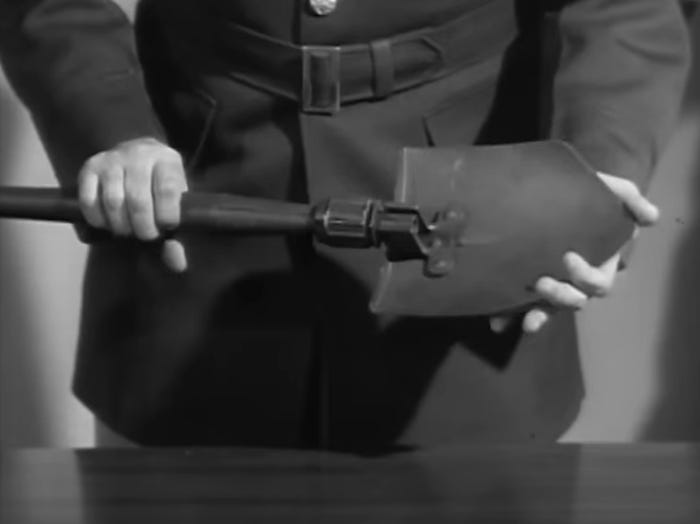
Known formally as the entrenching tool, the E-tool was a short-handled folding shovel that soldiers carried strapped to their backs. Its main purpose was deceptively simple: digging. But in the context of WWII, that meant digging fighting holes, building defensive positions, clearing drainage trenches, or even shaping makeshift cover in the middle of chaotic firefights.
The E-tool was a soldier’s silent partner — always there, always heavy, always necessary. Troops used it to pound stable stakes into the ground, chop through stubborn roots, or carve out enough space to get low and avoid enemy fire. And when everything went wrong and close combat erupted unexpectedly, the E-tool transformed into a brutal improvised weapon. Many veterans described moments when this steel-and-wood tool, not their rifle, was what kept them alive.
Despite being uncomfortable to carry and awkward at times, the E-tool represented something essential about infantry life: you survived by shaping the ground beneath you, sometimes in seconds, and this little shovel was the only thing that made that possible.
7. The Helmet That Shielded Their Lives
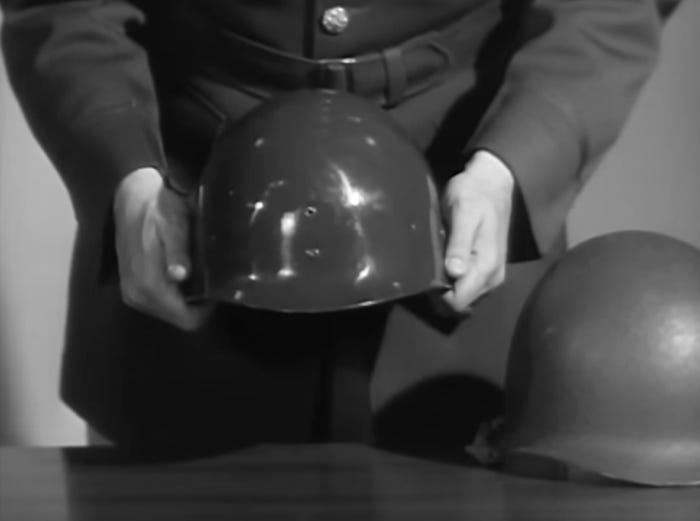
A WWII-era helmet wasn’t just a metal bowl — it was an ingenious two-part system consisting of a molded plastic liner and a steel outer shell. The liner allowed the helmet to sit securely on the soldier’s head, while the tough steel layer provided protection from flying shrapnel and debris. It wasn’t perfect; it couldn’t stop a direct bullet. But it dramatically reduced the risk from shell fragments, collapsing walls, and the unpredictable dangers of battlefield environments.
Soldiers wore their helmets constantly: during marches, patrols, artillery barrages, and even when trying to sleep in the dirt. Over time, many helmets became noticeably personalized — dented from near misses, scorched by heat, marked with unit symbols, or wrapped in netting to hold camouflage scraps. A helmet often told the story of where a soldier had been.
Beyond its protective purpose, the steel shell doubled as an improvised pot for heating water or melting snow during harsh winter campaigns. In a landscape where every item had to earn its place, the helmet proved its worth repeatedly, offering both security and utility in ways that may seem surprising today.
8. The Cargo Pack and What It Meant in the Field
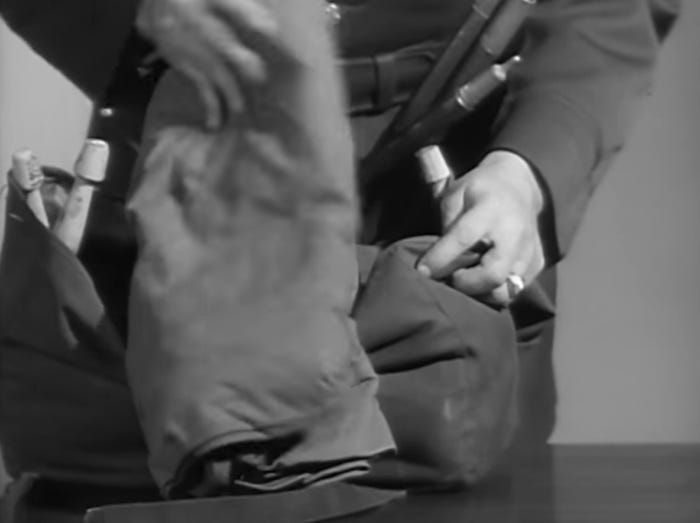
The cargo pack was designed to hold the soldier’s lightweight shelter components — typically half of a tent, a set of pins, and a standard-issue wool blanket. In theory, two soldiers would combine their tent halves to build a small, functional shelter. In practice, many troops realized that carrying this pack added weight and slowed them down during long movements.
Because speed and mobility often mattered more than comfort, soldiers frequently left the cargo pack behind in favor of a simple raincoat or poncho. Weather conditions, mission length, and terrain all influenced whether the pack came along. Still, when used properly, the tent and blanket provided a small measure of relief from the elements — especially during cold nights or rain-soaked pauses between movements.
Even though the cargo pack wasn’t loved by every soldier, it represented an important piece of wartime logistics. The military tried to balance mobility, shelter, and practicality, and the cargo pack was one of those attempts. Its presence in the standard gear list shows how unpredictable conditions were — some days a blanket and tent were a luxury, and other days they were a burden.

